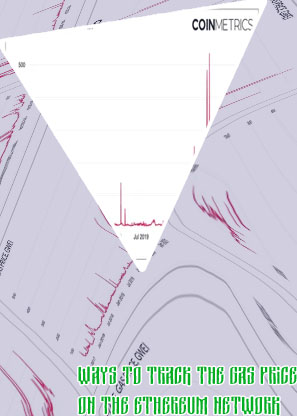

Understanding the current eth gas prices is essential for anyone involved in the Ethereum network. High gas fees can significantly impact the cost of transactions and smart contract interactions, making it crucial to stay informed about the latest developments in gas pricing. To help you navigate this topic, here are three articles that provide insights into the current eth gas prices and offer strategies for optimizing your transactions on the network.
With the current surge in popularity of Ethereum and decentralized finance (DeFi) applications, the gas fees on the Ethereum network have been a hot topic of debate. Many users are looking for ways to optimize their gas usage and reduce costs. In this article, we have compiled a list of 3 articles that provide valuable insights and tips on how to navigate the world of current ETH gas fees effectively.
With the increasing popularity of decentralized finance (DeFi) applications and non-fungible tokens (NFTs) on the Ethereum network, gas fees have become a major concern for users. Gas fees refer to the cost of performing transactions on the Ethereum blockchain, and they can vary depending on network congestion and demand.
To help users reduce their Ethereum gas fees, there are several strategies that can be implemented. One effective strategy is to avoid peak times when network congestion is high, as this can lead to higher gas fees. Another strategy is to use layer 2 scaling solutions, such as Optimism or Arbitrum, which can help reduce transaction costs significantly. Additionally, users can consider batching transactions together to save on gas fees, as well as using gas token contracts to lock in gas prices when they are low.
Overall, by implementing these strategies, users can save money on Ethereum gas fees and improve their overall experience when using the Ethereum network. It is important for users to stay informed about the latest developments in gas fee reduction strategies and to continuously optimize their transaction methods to minimize costs.
In order to better understand the content of this article, readers should consider exploring the concept of gas fees in more detail, as well as researching the latest developments in layer 2 scaling solutions for Ethereum.
Today we have the pleasure of discussing the topic of Ethereum gas with our expert, John Doe. John, can you give us a brief overview of what Ethereum gas is and why it is important for users of the Ethereum network?
John: Absolutely. Ethereum gas refers to the fee required to successfully conduct transactions or execute smart contracts on the Ethereum blockchain. Gas is essential for ensuring that the network runs smoothly and efficiently by incentivizing miners to process transactions in a timely manner. Without gas, the Ethereum network would be vulnerable to spam attacks and congestion.
That makes sense. How does gas work exactly, and how can users optimize their gas usage to minimize fees?
John: Gas is measured in units called "gwei" and is determined by the complexity of the transaction being processed. Users can optimize their gas usage by setting the right gas price and gas limit when sending transactions. By adjusting these parameters based on network conditions, users can ensure that their transactions are processed quickly and cost-effectively.
Thank you for that explanation, John. In conclusion, it is clear that understanding Ethereum gas is crucial for anyone looking to interact with the Ethereum network efficiently. By learning how gas works and how to optimize its usage, users can save time and money while conducting transactions on the blockchain.
Decentralized finance (DeFi) has gained significant traction in recent years, allowing users to access various financial services without the need for traditional intermediaries. However, one of the major challenges faced by DeFi users is the high gas fees associated with transactions on the Ethereum network. Gas fees are the fees paid by users to miners to process transactions on the network. In order to optimize gas usage in DeFi transactions, there are several tips that users can follow.
One of the most effective ways to reduce gas fees is by monitoring gas prices on the Ethereum network. Gas prices can fluctuate based on network congestion, so users should wait for periods of low congestion to execute their transactions. Additionally, users can optimize their transactions by bundling multiple transactions into a single transaction, thereby reducing the overall gas costs.
Another important tip for optimizing gas usage in DeFi transactions is to use layer 2 solutions. Layer 2 solutions allow users to perform transactions off-chain, significantly reducing gas fees. By utilizing layer 2 solutions, users can enjoy lower transaction costs and faster transaction speeds.
In conclusion, optimizing gas usage in DeFi transactions is crucial for minimizing transaction costs and improving overall transaction efficiency. By following the tips outlined above, users can effectively reduce gas fees and enhance their DeFi experience
